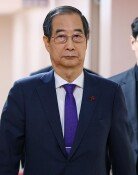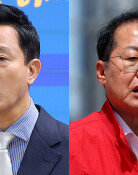Japan sees biggest wage growth in 30 years
Japan sees biggest wage growth in 30 years
Posted March. 15, 2024 08:13,
Updated March. 15, 2024 08:13
In Japan’s economic landscape, ongoing labor-management wage negotiations have garnered attention. The notable phrase emerging from these talks is: “Even requests for tens of thousands are met with a positive response,” implying that companies unconditionally accept trade union proposals without much negotiation. The wage negotiation in the context of large corporations is often termed “spring fighting,” but the term “fighting” appears oddly out of place, as the situation is peaceful and tranquil in Japan.
Recent developments, such as the Nikkei 225 index surpassing 40,000 for the first time, mark a significant departure from Japan’s “lost 30 years.” Wage growth, stagnant for three decades, is now thawing. Major corporations like Nippon Steel (14.2%), Kobe Steel (12.8%), Aeon (6.4%), and Panasonic (5.5%) have increased wages by noteworthy percentages, with over 85% of companies affiliated with The Japanese Federation of Iron and Steel Workers’ Union either accepting or positively adjusting union proposals.
This wage surge traces back to the “Abenomics” era, initiated by former Prime Minister Shinzo Abe in 2012. Through policies encompassing the “three arrows,” i.e., monetary easing, fiscal expansion, and growth strategies, the Japanese government encouraged investment and wage hikes. It urged companies to expand investment and raise wages. This is often dubbed as a “government-led spring fighting” that emerged in the 2010s.
However, despite these efforts, wage growth remained modest, especially among small and medium-sized enterprises (SMEs), indicating the depth of deflation. However, the Japanese government did not push businesses to the edge. The prime minister urged businesses to raise wages, but the government did not overwhelm businesses with demands even though they did not comply with the request. It neither raised minimum wages by more than 10%, citing a widening gap in wages between large companies and SMEs, nor awkwardly adjusted policy direction.
Despite limited progress, the Japanese government steadfastly pursued an environment conducive to wage growth and business prosperity, ignoring cynical claims that wage increases would not be achieved solely by the prime minister’s advocacy. Regulatory easing within the Tokyo urban area, including adjustments to floor area ratio, altitude restriction, and building-to-land ratio, spurred a revival in the construction industry. Additionally, substantial subsidies totaling trillions of won were allocated to both domestic and foreign semiconductor firms, including Taiwan’s TSMC, invigorating investment in this sector across Japan. The prolonged weakness of the Yen bolstered Japan’s export competitiveness, leading to enhanced performance by Japanese businesses. Over a decade of such initiatives, stock prices surged, and tangible wage growth materialized.
South Korea implemented significant increases to its minimum wage and tightened regulations on large corporations, while Japan opted for regulatory easing and monetary stimulus. South Korea raised its minimum wage by 16.4% and 10.9% in 2018 and 2019, respectively, as part of its income-led growth strategy. However, this move faced criticism regarding its potential impact on small business owners, which was disregarded. Consequently, South Korea experienced an “employment shock,” with job growth remaining stagnant despite an economic crisis. Furthermore, the expansion of semiconductor plants in South Korea was hindered by the local government having the power to give water and electricity supply authorization, driven by concerns such as residential complaints, local residents’ wishes, and electoral promises.
After a decade-long pursuit of “escaping deflation,” Japan has achieved its most substantial wage growth in 30 years. There are indications that Japan may soon lift its negative interest rates. This transformation is akin to revitalizing an economy previously strained to the breaking point. While the neighboring country surges ahead, the discourse surrounding economic revitalization is conspicuously absent in our pre-general election campaigns.







